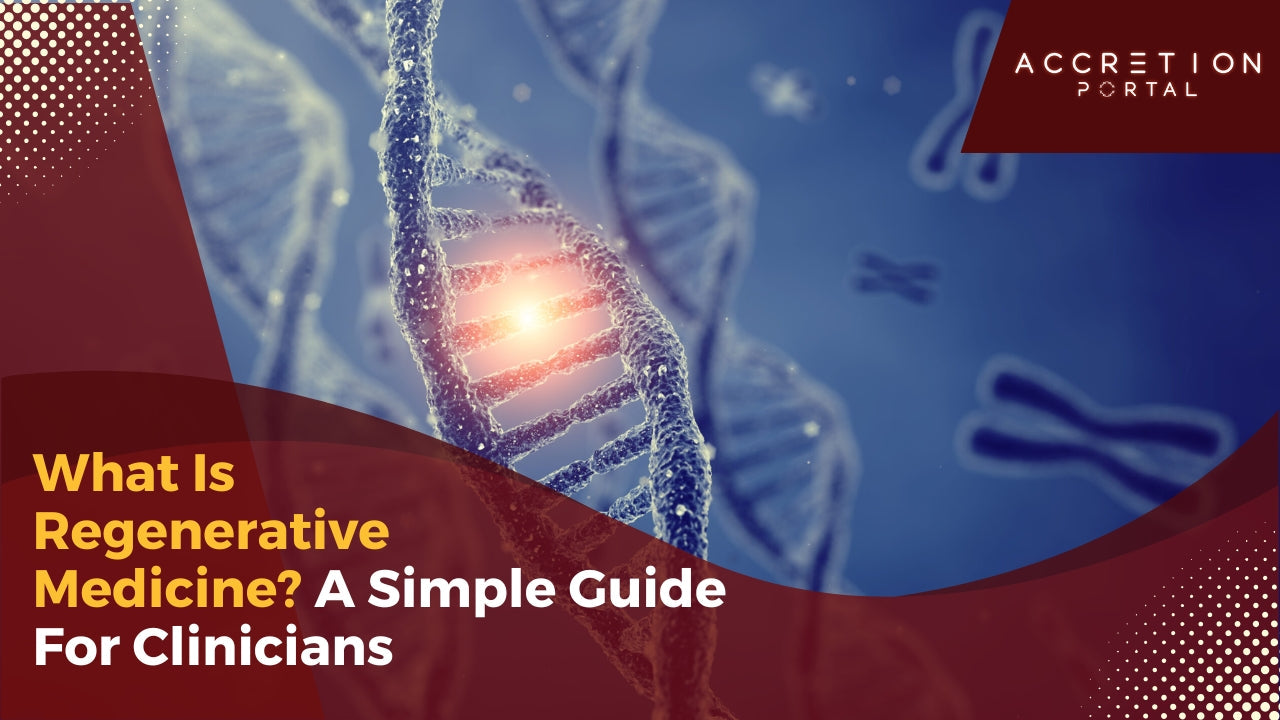
What Is Regenerative Medicine? A Simple Guide for Clinicians
Regenerative medicine refers to clinical methods that support the body’s ability to repair, restore, or replace damaged cells, tissues, or organs. Rather than relying on traditional replacement therapies, regenerative techniques aim to assist the body in healing itself. This approach may include the use of biologics, devices, or cellular therapies. The field continues to evolve, offering professionals new options to explore.
What Is Regenerative Medicine?
Regenerative medicine focuses on techniques that help restore function to damaged tissues. These methods do not act as direct cures but work in supportive ways. For example, procedures might involve using growth factors, cellular products, or biocompatible scaffolds. These interventions may contribute to natural healing responses without creating new risks from more invasive treatments.
Key Principles
-
Repair: Assist the body in fixing damaged structures.
-
Replace: Offer support for tissue or cellular loss.
-
Regenerate: Promote new growth in areas where function is reduced.
Common Tools and Materials
-
Platelet-Rich Plasma (PRP) — used to harness the body’s natural healing components.
-
Adipose processing systems — for isolating and preparing cellular materials.
-
Biocompatible scaffolds — to provide structural support and enhance cell activity.
-
Centrifuges and bioreactors — essential for the preparation and refinement of biological materials.
All these tools are utilized in controlled environments that meet regulatory and safety standards to ensure consistency and quality in regenerative applications.
What Is the Purpose of Regenerative Medicine?
Regenerative medicine serves several purposes, depending on patient conditions and provider goals.
Supplementing Traditional Care
It may be used as a secondary option when conventional therapies have limitations or long recovery periods. For example, PRP injections might be used in musculoskeletal care to support soft tissue healing.
Improving Healing Time Frames
Some regenerative methods may help improve the local environment of an injury. This can encourage cell migration, support structural rebuilding, and help manage recovery expectations.
Supporting Outpatient Care Models
Regenerative techniques may be suitable for outpatient procedures. This reduces the need for surgical facilities or extended downtime, depending on the specific treatment protocol.
Clinical Use Cases Under Evaluation
While research continues to develop, some areas of interest include:
-
Orthopedic and musculoskeletal care
-
Wound management
-
Aesthetic and dermatological procedures
-
Periodontal and dental support
-
Adipose-derived microfat grafting
It's important to evaluate current regulatory guidance before offering these treatments.
Responsible Integration in Practice
Training and Readiness
Clinical use of regenerative methods requires training and familiarity with biological materials. Practices often need planning to integrate equipment, modify workflows, and manage patient expectations.
Ethical Considerations
Providers must avoid promising results that are not yet supported by long-term clinical evidence. Care should be guided by transparency, safety, and clear documentation.
Regulatory Compliance
Practitioners must adhere to FDA and local standards. Only approved or cleared tools and materials should be used in patient care.
How Accretion Portal Can Help
At Accretion Portal, we support professionals interested in integrating regenerative technologies into their practice. Our focus is on device delivery, implementation guidance, and continuing education to ensure seamless adoption.
Our systems include:
-
PRP platforms
-
Centrifuge systems
-
Adipose processing units
We also offer strategy consultations to help providers determine which options best align with their practice model. Please note that we do not prescribe treatments or make clinical claims.
Take the Next Step
If you're exploring regenerative medicine, our team is available to help you review options and plan integration.
Book a Free Strategy Call
Phone: 800-307-1194